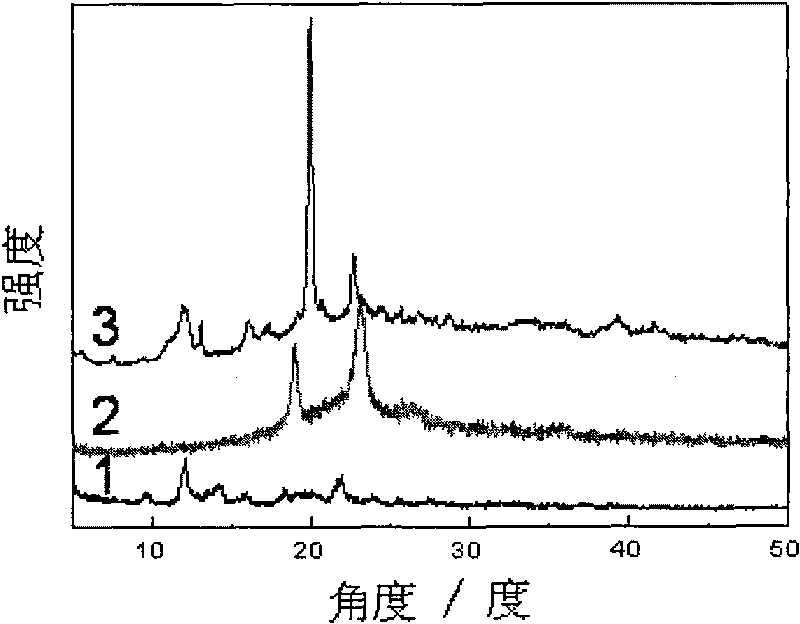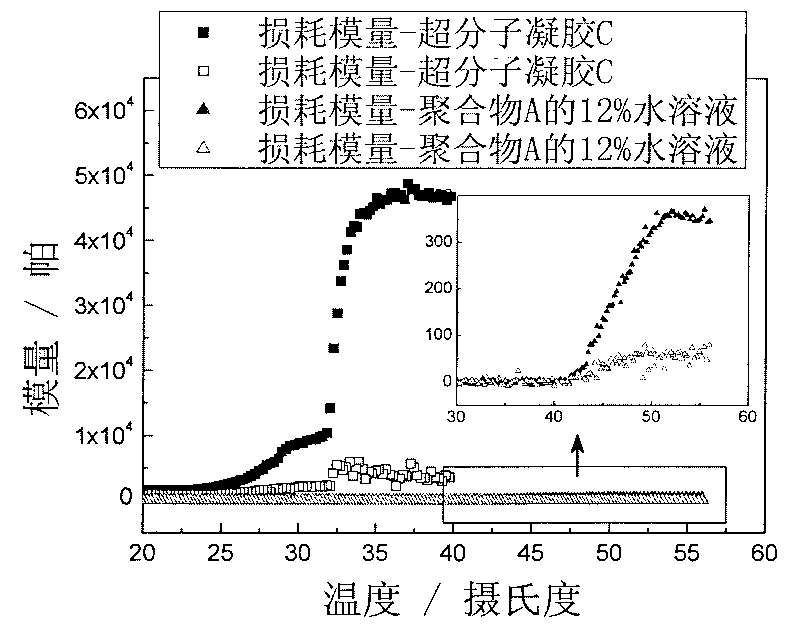Supramolecular hydrogel gene vector material, and preparation method and application thereof
A technology of supramolecular hydrogel and gene carrier, applied in the field of biomedical engineering materials, can solve the problems that the application of supramolecular hydrogel has not been reported yet, and achieve convenient and fast application, good shear thinning, low concentration and temperature Effect
- Summary
- Abstract
- Description
- Claims
- Application Information
AI Technical Summary
Problems solved by technology
Method used
Image
Examples
Embodiment 1
[0043] a. Dissolve the dried polyethylene glycol-polypropylene glycol-polyethylene glycol triblock copolymer Pluronic F-127 in a mixed solution of dichloromethane and pyridine, then add p-toluenesulfonyl chloride at 35°C Under room temperature conditions, the reaction was protected from light for 24 hours; the molar ratio of the polyethylene glycol-polypropylene glycol-polyethylene glycol triblock copolymer to p-toluenesulfonyl chloride was 1:2, and the solvent dichloromethane and pyridine The volume ratio of the mixture is 2: 1, containing 15 grams of Pluronic F-127 in every 100 milliliters of mixed solutions; The amount added is 3 grams per 100 milliliters of organic phase), washed and filtered; dichloromethane was evaporated to obtain polyethylene glycol-polypropylene glycol-polyethylene glycol-p-toluenesulfonate;
[0044] B, the ammonia solution (polyethylene glycol-polypropylene glycol-polyethylene glycol-p-toluenesulfonate) of above-mentioned product Polyethylene Glycol-...
Embodiment 2
[0049] a. Dissolve the dried polyethylene glycol-polypropylene glycol-polyethylene glycol triblock copolymer Pluronic F-68 in a mixed solution of dichloromethane and pyridine, then add p-toluenesulfonyl chloride, at 15°C Under room temperature conditions, the reaction was protected from light for 36 hours; the molar ratio of the polyethylene glycol-polypropylene glycol-polyethylene glycol triblock copolymer to p-toluenesulfonyl chloride was 1:2, and the solvent dichloromethane and pyridine The volume ratio is 2: 1, containing 5 grams of Pluronic F-68 in every 100 milliliters of mixed solutions; The amount added is 5 grams per 100 milliliters of organic phase), washed and filtered; dichloromethane was evaporated to obtain polyethylene glycol-polypropylene glycol-polyethylene glycol-p-toluenesulfonate;
[0050] B, the ammonia solution (polyethylene glycol-polypropylene glycol-polyethylene glycol-p-toluenesulfonate) of above-mentioned product Polyethylene Glycol-Polypropylene Gly...
Embodiment 3
[0055] (1) At room temperature at 25°C, the polyethylene glycol-polypropylene glycol-polyethylene glycol-polylysine multi-block polymer obtained in Example 2 was formulated into 1 mL with a mass percentage concentration of 8% (w / w), and then add a plasmid pEGFP solution with a concentration of 20 μL 0.5 μg / μL (purchased from Invitrogen and amplified with Escherichia coli ) to it, mix well and let stand for 20 minutes to obtain a polymer / pEGFP complex solution;
[0056] (2) Add 1.0 mL of 15% α-cyclodextrin aqueous solution to the polymer / pEGFP complex solution obtained in step (1), stir and mix evenly, and let stand at room temperature for 6 hours to obtain supramolecular Hydrogel gene carrier material B.
PUM
| Property | Measurement | Unit |
|---|---|---|
| particle diameter | aaaaa | aaaaa |
Abstract
Description
Claims
Application Information
 Login to View More
Login to View More - R&D
- Intellectual Property
- Life Sciences
- Materials
- Tech Scout
- Unparalleled Data Quality
- Higher Quality Content
- 60% Fewer Hallucinations
Browse by: Latest US Patents, China's latest patents, Technical Efficacy Thesaurus, Application Domain, Technology Topic, Popular Technical Reports.
© 2025 PatSnap. All rights reserved.Legal|Privacy policy|Modern Slavery Act Transparency Statement|Sitemap|About US| Contact US: help@patsnap.com



